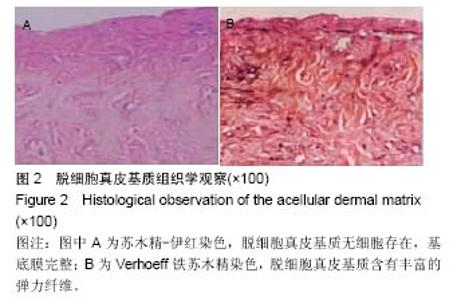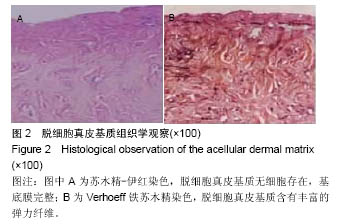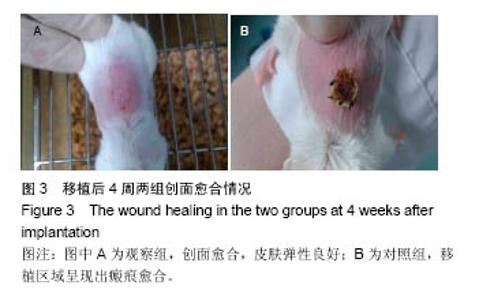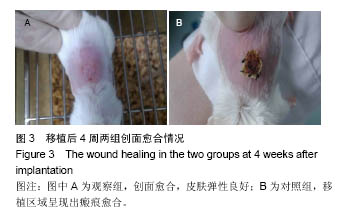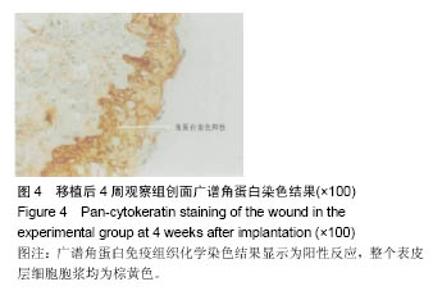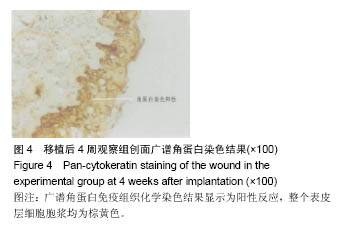| [1]刘仪红,王普杰,田浩明,等.自体骨髓干细胞移植治疗足毁损伤伴重度皮肤缺损的临床研究[J].泸州医学院学报, 2014,37(2): 185-189.[2]刘淑平,程涛,袁卫平.人诱导多能干细胞的成瘤性发生机制及干预策略[J].中华血液学杂志,2015,36(3):258-261.[3]霍娜,鲁莉英,刘洪臣.皮肤真皮来源多能干细胞筛选与鉴定[J].口腔颌面修复学杂志,2015,16(1):9-13.[4]南文滨,陈红丽,刘瑞,等.胶原-纤维蛋白胶膜复合脐带间充质干细胞修复小鼠全层皮肤创面的实验研究[J].中华损伤与修复杂志(电子版),2015,10(1):41-45.[5]丁越,徐海龙,谢洪.调节骨髓间充质干细胞向皮肤创面迁移过程中的血小板衍生生长因子[J].中国组织工程研究, 2015,19(1): 37-43.[6]刘玉磊.银屑病患者皮肤间充质干细胞中表皮生长因子、转化生长因子-β1的表达水平及其意义[J].实用临床医药杂志, 2014, 18(16):78-80.[7]喻兰雅,张晨芳,寇晓梅.猪脂肪间充质干细胞分离、鉴定、诱导及联合扩张器重建乳房模型的研究[J].北京生物医学工程, 2014, 33(4);369-373.[8]张永平,阎贺.异基因脂肪干细胞对皮肤移植免疫调节的影响[J].中国现代普通外科进展,2014,17(11):846-850.[9]汪正燕,果磊,蒲晓姝.神经干细胞植入大鼠缺损皮肤对创面神经修复的影响[J].重庆医科大学学报,2014,39(9):1275-1280.[10]高鹏.表皮干细胞:从基础到临床[J].中国微创外科杂志, 2014, 14(9):854-857.[11]杜娟.表皮干细胞:治疗难愈性皮肤创面的种子细胞[J].中华损伤与修复杂志(电子版),2014,9(6):67-69.[12]滕小梅,丁庆伟,沈振亚.水凝胶促进骨髓间充质干细胞在同种异体皮肤移植中的免疫调节作用[J].中华实验外科杂志, 2014, 31(11):2493-2493.[13]姜大朋,李岩,杨墨文,等.大鼠皮肤成纤维细胞分泌的细胞外基质对肌腱干细胞特性的影响[J].中国矫形外科杂志,2014,22(15):1408-1411.[14]王哲,张殿宝,刘晓玉,等.正常与糖尿病小鼠脂肪间充质干细胞移植促进皮肤创伤愈合的比较[J].解剖科学进展, 2014,(5); 420-424.[15]阎贺,张永平,徐淑娟.脂肪来源干细胞对兔皮肤组织扩张后回缩率的影响[J].中国美容整形外科杂志,2014,25(6):370-373.[16]高伟成,崔磊,马少林.脂肪干细胞与糖尿病皮肤软组织新生血管生成研究进展[J].中华糖尿病杂志,2014,6(5):342-345.[17]贾伟丽,李默,吴剑宇.将人的皮肤成纤维细胞直接诱导为神经干细胞[J].基础医学与临床,2014,34(5):579-582.[18]骨髓基质干细胞分泌的基质细胞衍生因子-1促进C57BL/6小鼠皮肤放射损伤创面愈合[J].中华损伤与修复杂志(电子版), 2014, 9(5):31-31.[19]刘美辰,刘霞.脂肪间充质干细胞治疗皮肤老化的研究进展[J].组织工程与重建外科,2014,10(4):236-239.[20]张俊伶,黄颂,路璐.第三代端粒酶缺失小鼠皮肤表皮干细胞分离培养特性观察[J].天津医药,2014,42(8):762-764.[21]李东杰,柴家科,申传安,等.人脐带间充质干细胞促进微粒皮复合异体皮移植修复兔皮肤创面的实验研究[J].中华损伤与修复杂志(电子版),2014,9(4):21-24.[22]王宏林课题组揭示皮肤间充质干细胞迁移新机制 上海交通大学基础医学院科研人员发现钙离子通道调控间充质干细胞的迁移[J].上海交通大学学报:医学版,2014,34(8):I0001-I0001.[23]张玉琳,王静文,石予白,等.人脐血间充质干细胞生物学特性、分化潜能与临床应用的研究进展[J].中国免疫学杂志, 2014,30(7): 1006-1008.[24]胡克苏,祁俊,蔡玉辉,等.人脐带间充质干细胞移植修复烧伤皮肤的机制[J].江苏医药,2014,40(7):759-761.[25]王岗,彭丽媛,巩守平,等.MHP36神经干细胞体外经Ⅳ型胶原诱导向平滑肌细胞分化的研究[J].西部医学, 2012,24(6):1045- 1049.[26]崔洪勋,伍津津,唐书谦,等.表皮干细胞对Ⅳ型胶原的黏附特性及分选方法的研究[J].第三军医大学学报,2009,31(9):802-804.[27]]胡孝丽,罗志晓,陈启林,等.Ⅳ型胶原粘附法纯化富含干细胞的鼠切牙颈环上皮细胞[J].临床口腔医学杂志, 2009,25(8): 468-470.[28]朱宛宛,王淑艳,吴迪,等.胰酶和Ⅳ型胶原酶在人胚胎干细胞传代中的作用特点[J].首都医科大学学报,2008,29(4):445-450.[29]梁履华,郭杰坤,游贵方,等.胚胎成纤维细胞和Ⅳ型胶原黏附分选表皮干细胞的比较研究[J].中华损伤与修复杂志(电子版), 2008, 3(5):11-14.[30]王和庚,黎洪棉,田举,等.异体骨髓间充质干细胞联合自体PRP促进皮肤慢性溃疡创面愈合的实验研究[J].新医学, 2014,45(6): 373-377.[31]全仁夫,郑宣.VEGF165基因修饰毛囊干细胞复合明胶-硫酸软骨素-透明质酸三维支架构建皮肤替代物促血管化[J].中华创伤杂志,2014,30(6):598-604.[32]张彦刚,胡大海,张战凤.人表皮干细胞改良培养及其组织工程皮肤的构建[J].中国美容医学,2011,20(1):79-82.[33]刘德伍,钟清玲,刘繁荣.表皮干细胞复合羊膜构建组织工程皮肤修复糖尿病难愈创面[J].透析与人工器官,2010,21(3):12-14.[34]甘露,曹川,李世荣,等.以表皮干细胞与HaCaT细胞为种子细胞构建组织工程皮肤的比较研究[J].第三军医大学学报,2009, 31(20):1977-1980. |


